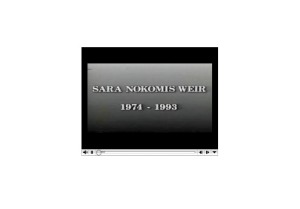The news industry knows the impact of multimedia presentations. So do prosecutors and district attorneys.
One controversy brewing in the legal industry is the use of multimedia presentations during the penalty phase of a trial. Typically, in a murder case, those who knew the victim can talk about that person, so that the jury gets a sense of the loss to society before they decide the penalty. Often, they will also show pictures and in some cases, a slide show or multimedia presentation.
Such was the case in Kelly v. California. Douglas Kelly was convicted of killing a 19-year-old woman, Sara Weir. During the penalty phase, a 20-minute multimedia presentation was played, showing pictures and video of the victim throughout her life, set to music by Enya, with her mother’s voice narrating. The defendant got the death penalty. His attorneys appealed, claiming that the videotape was unduly emotional.
Sometimes such multimedia presentations as evidence is not permitted, and the California Supreme Court mentioned cases where they have excluded such presentations. Those exclusions were because the videotapes were irrelevant, and in one case involved a paid actor.
 But the videotape in Kelly was ruled to be acceptable by the California Supreme Court. Even though the soft music was probably overboard, the California Supreme Court ruled that in light of the trial as a whole, it was not enough to have a significant impact on the jury as a whole.
But the videotape in Kelly was ruled to be acceptable by the California Supreme Court. Even though the soft music was probably overboard, the California Supreme Court ruled that in light of the trial as a whole, it was not enough to have a significant impact on the jury as a whole.
The U.S. Supreme Court refused to review the case on further appeal. But two of the nine justices wrote strong statements urging that the high court should have granted review (it takes four justices to agree for the court to accept a petition).
Justice Stevens said, “when victim impact evidence is enhanced with music, photographs, or video footage, the risk of unfair prejudice quickly becomes overwhelming.”
He added that “their primary, if not sole, effect was to rouse jurors’ sympathy for the victims and increase jurors’ antipathy for the capital defendants”
Justice Breyer, who called the presentation tasteful and “above all, moving,” said, “any decision to impose the death sentence must be… based on reason rather than caprice or emotion,” thought that the court should have reviewed the case to help lower courts create better guidelines.
Want to decide for yourself? The U.S. Supreme Court has posted the video:
http://www.supremecourtus.gov/opinions/video/kelly_v_california.html
My opinion… The circumstances of the crime were such that this presentation could have been done in a far more “overdone” manner. The mother never seemed to choke up and there was not a big build up at the end that would really knock you out. Yeah, it’s emotional, but I can’t imagine how the story of a woman who was murdered, told by her mother, could be presented in a way that is not emotional.
I have covered many a murder trial, and they all make you want to go home and hug the people you love. They make you cry. Period.


Comments